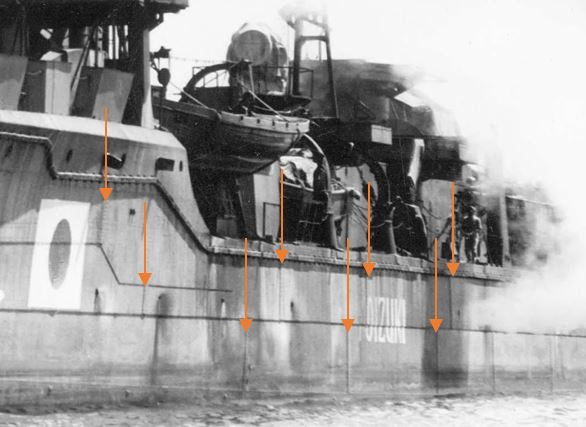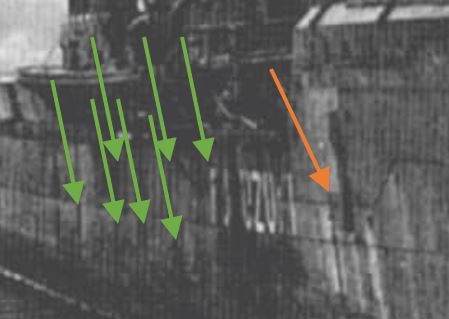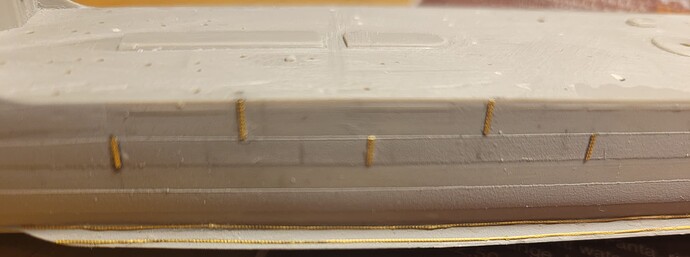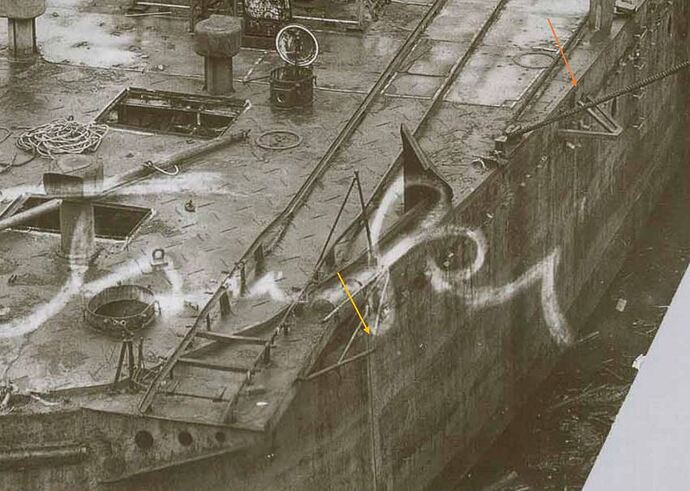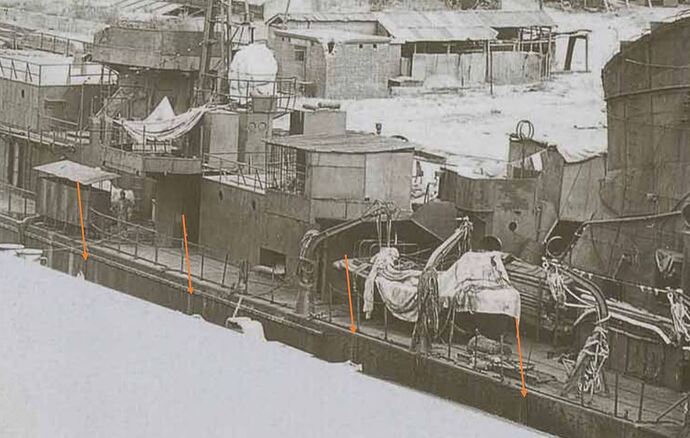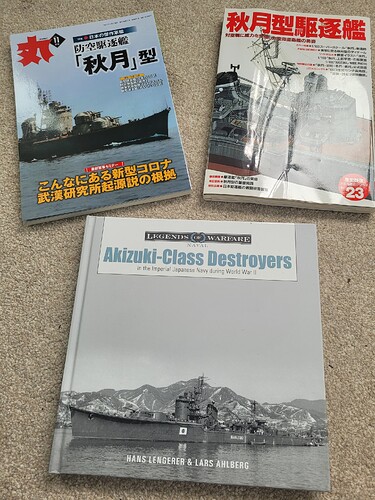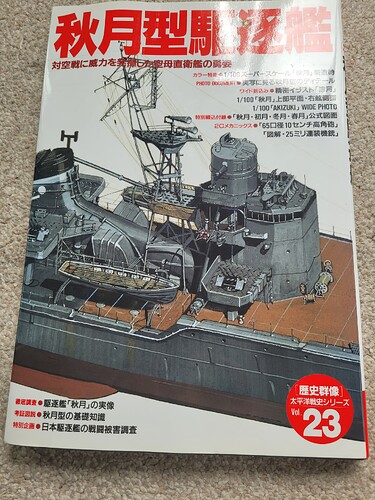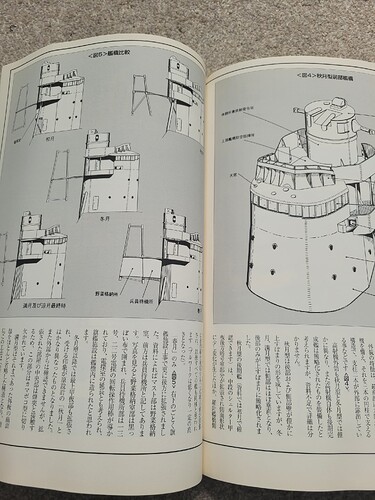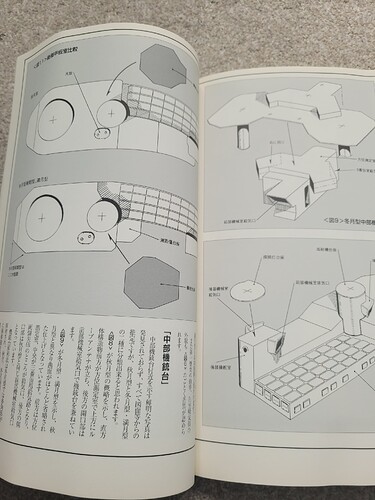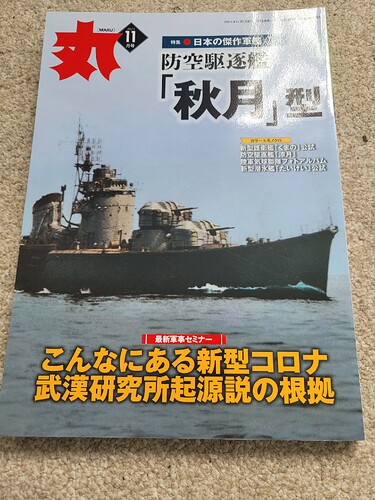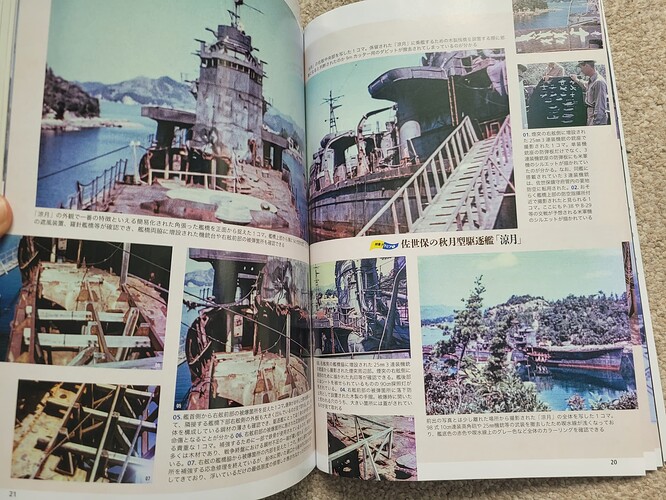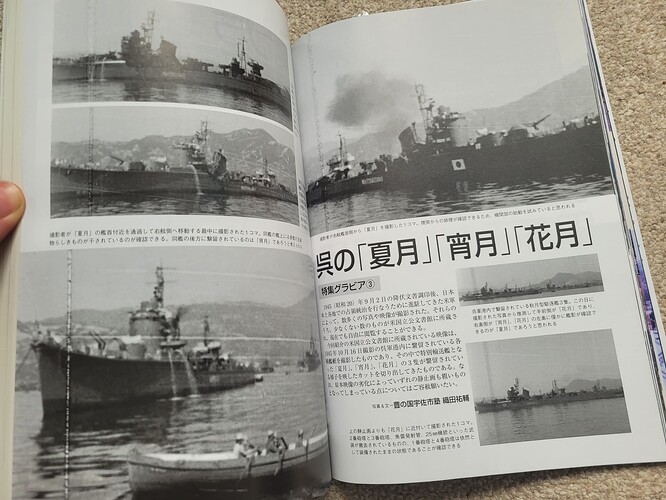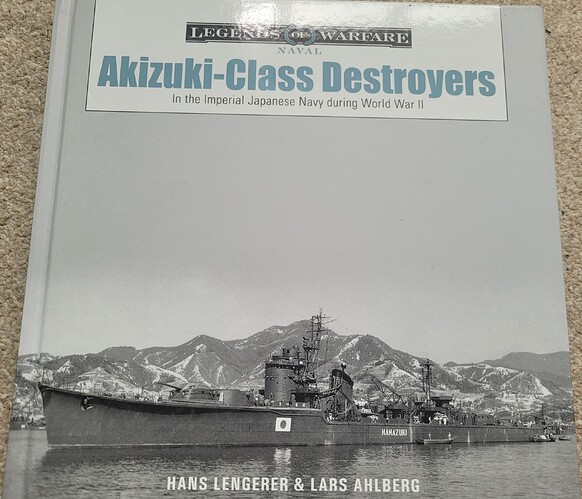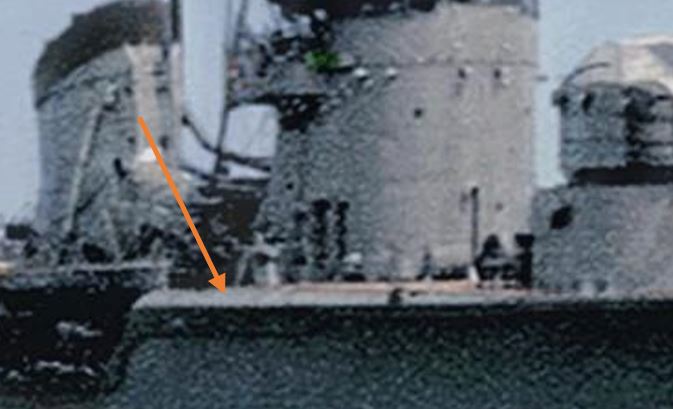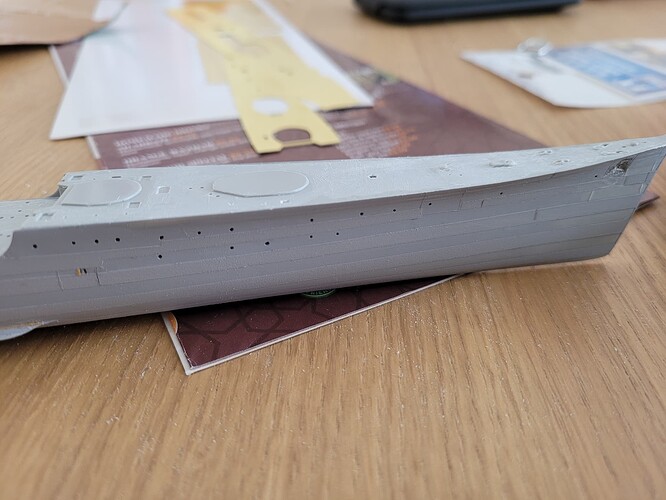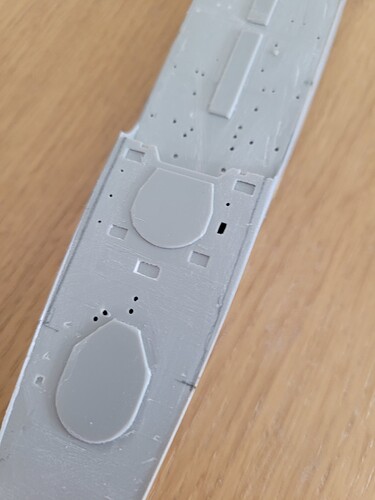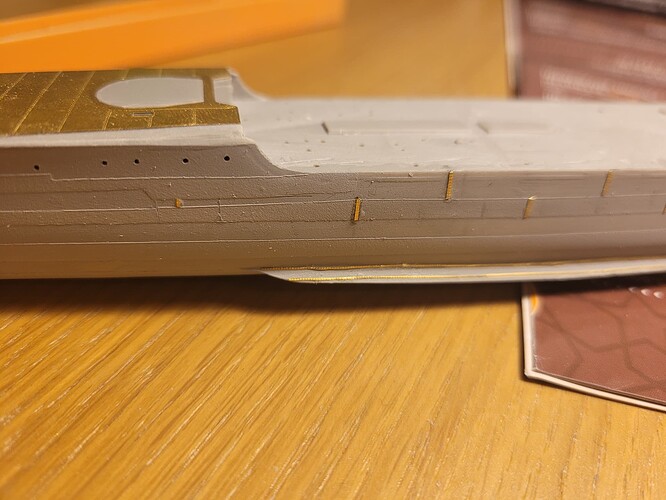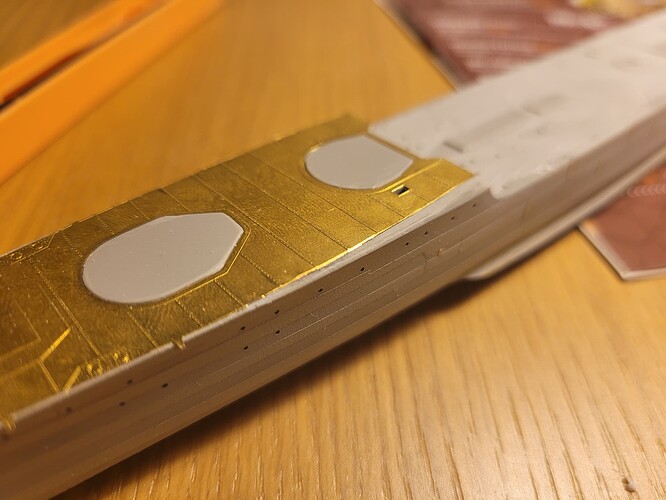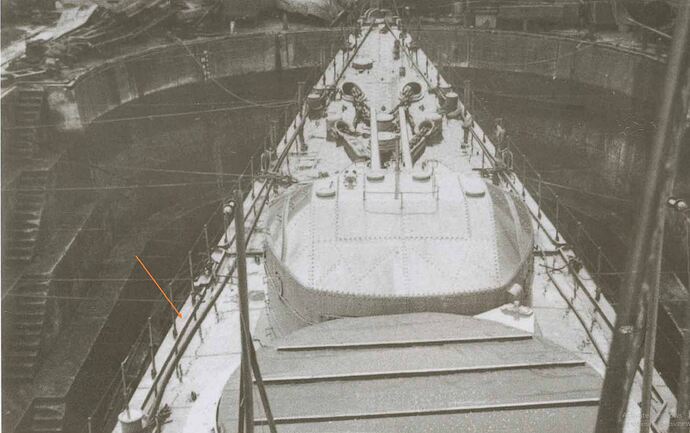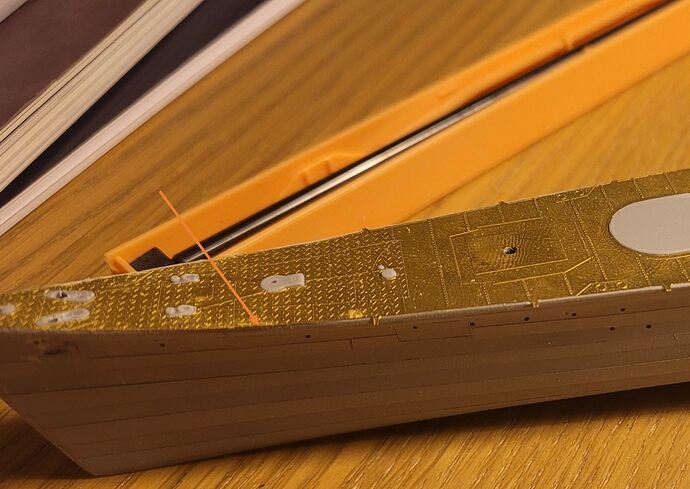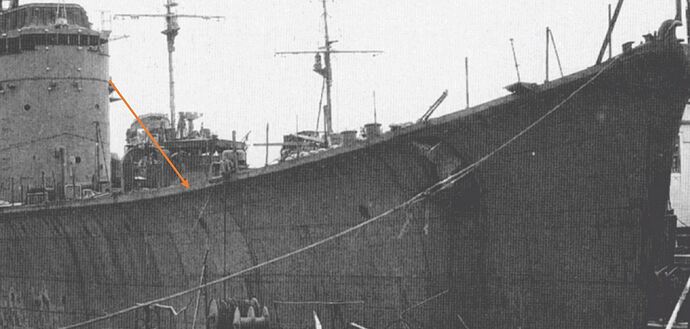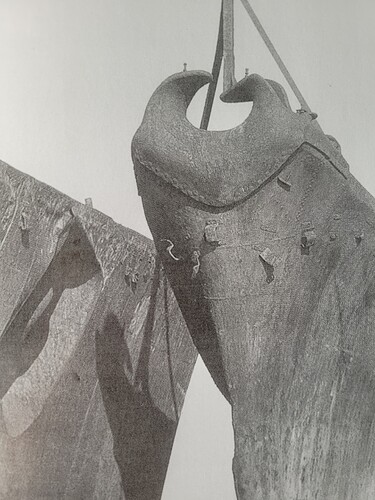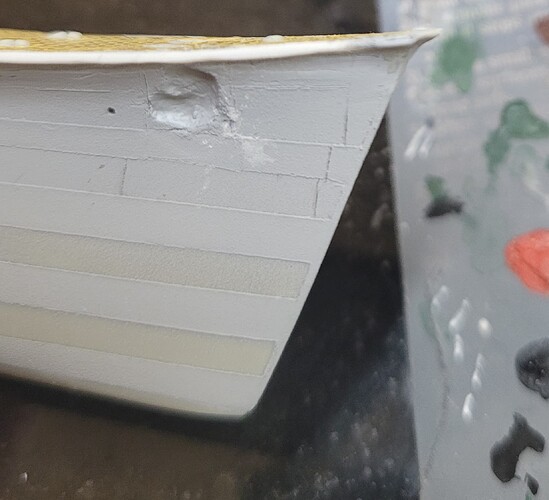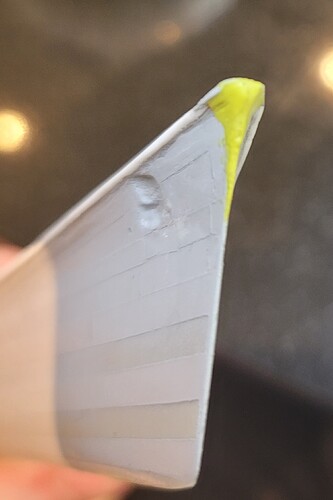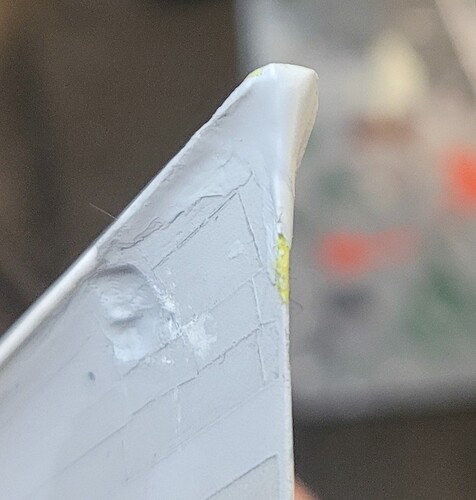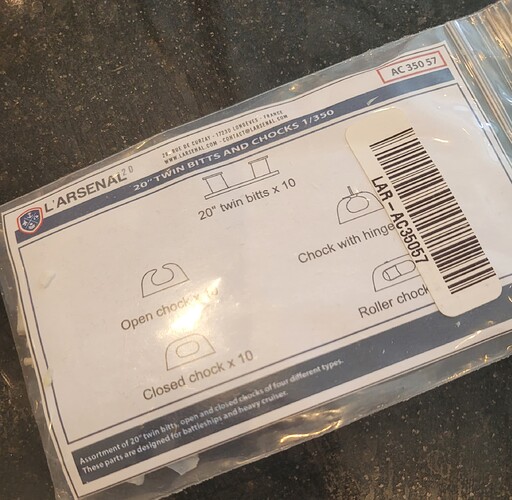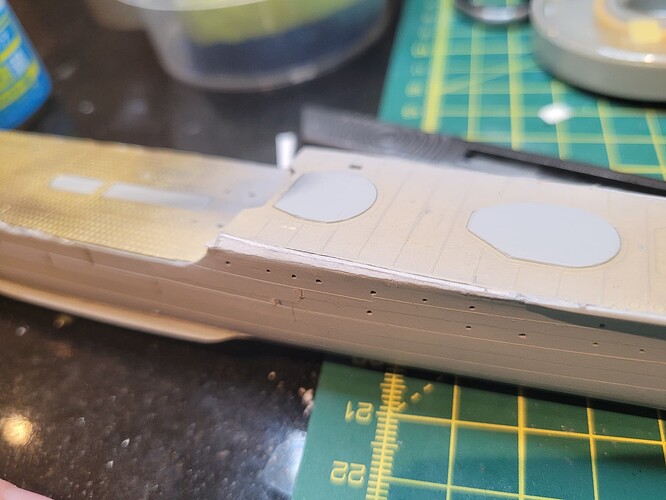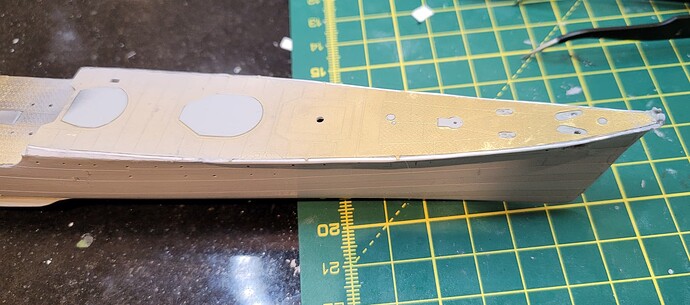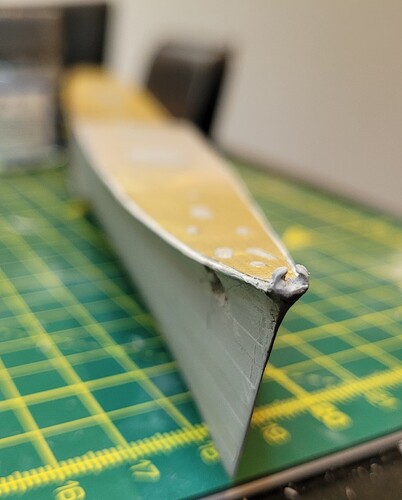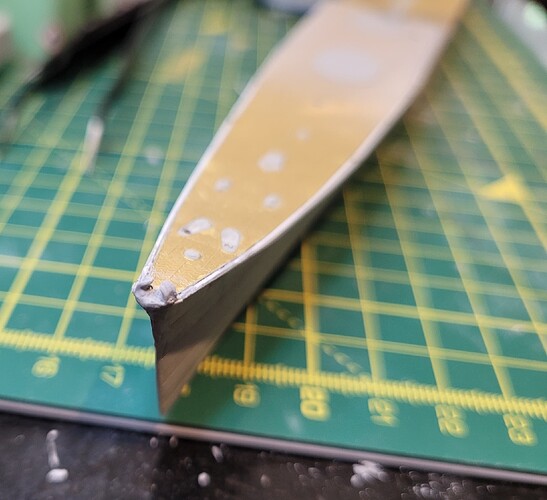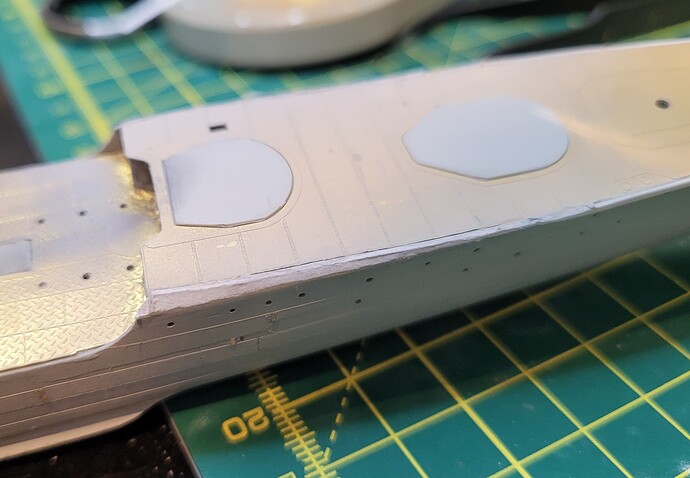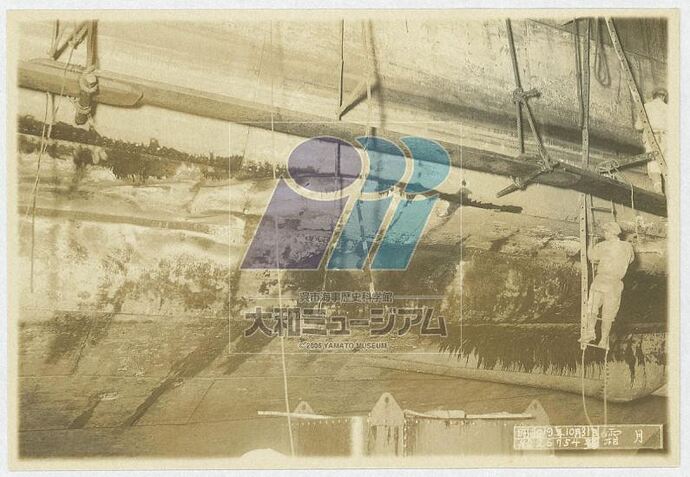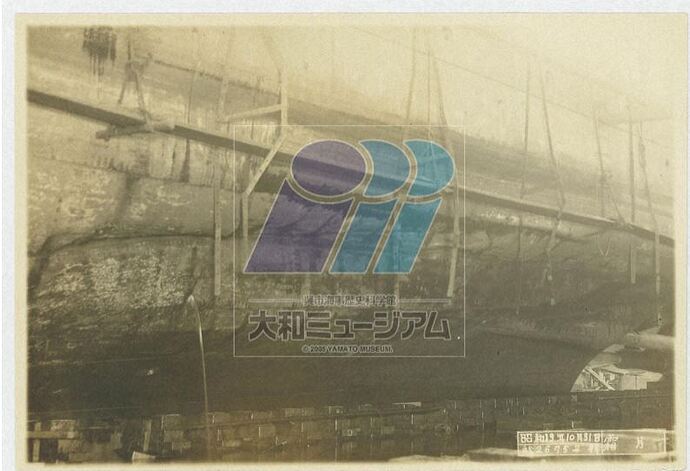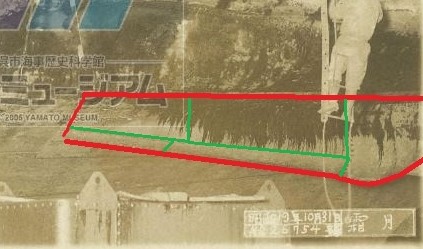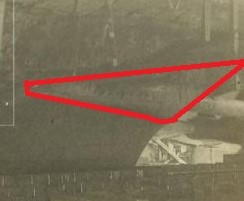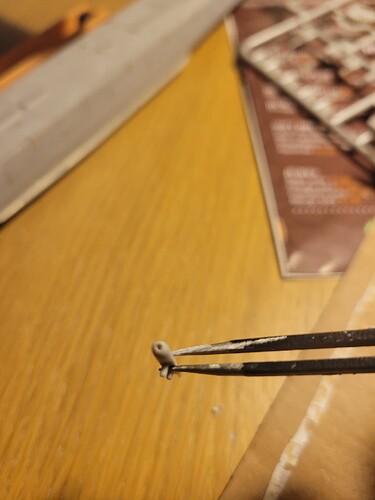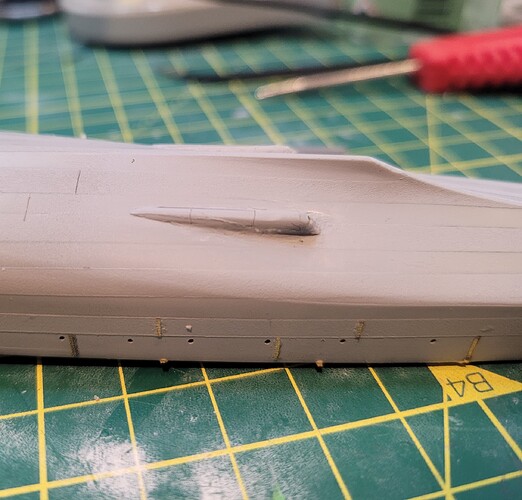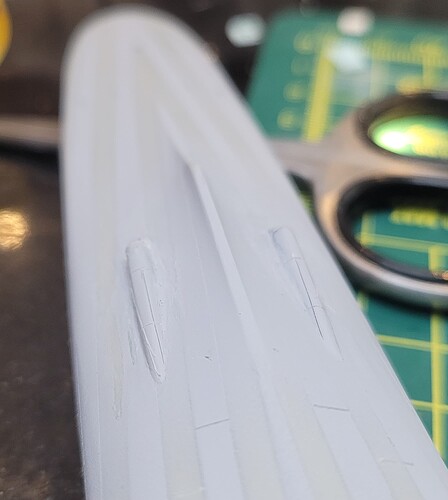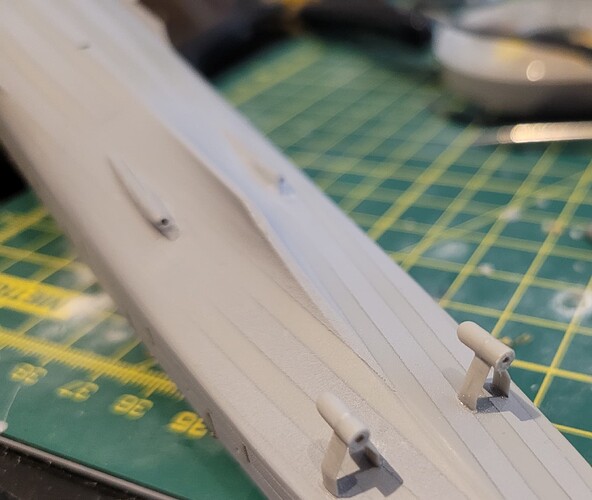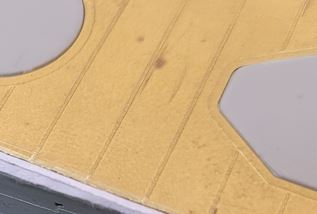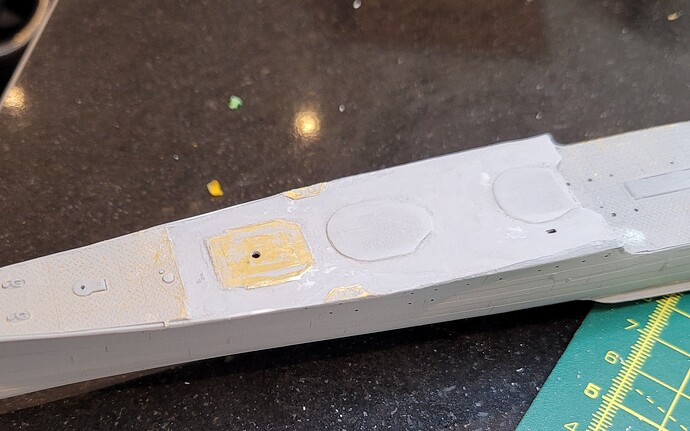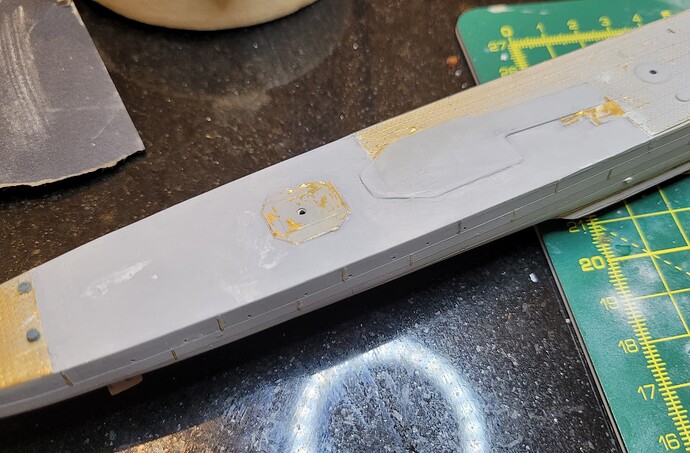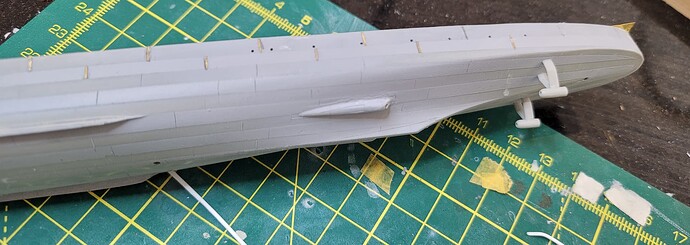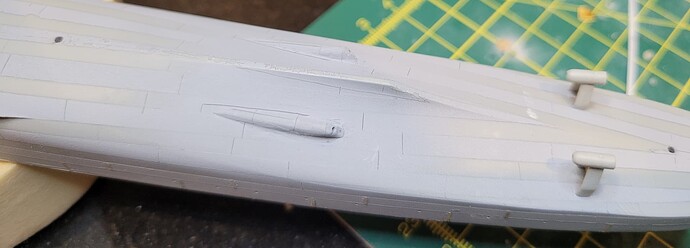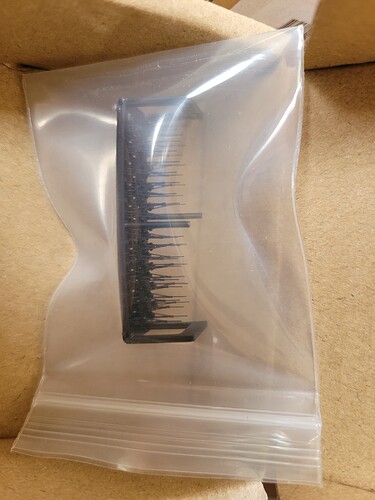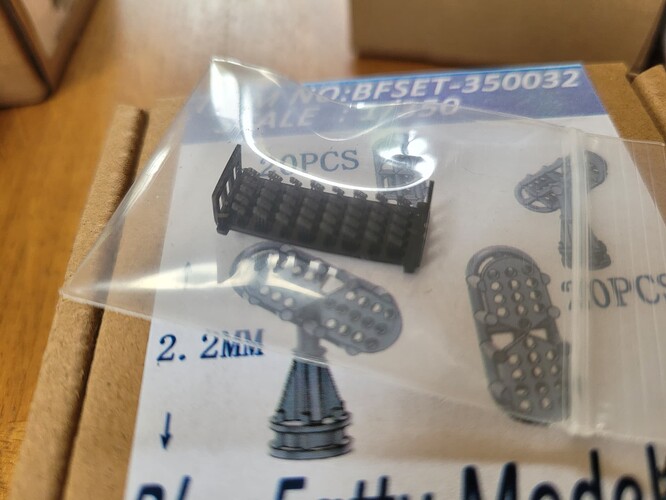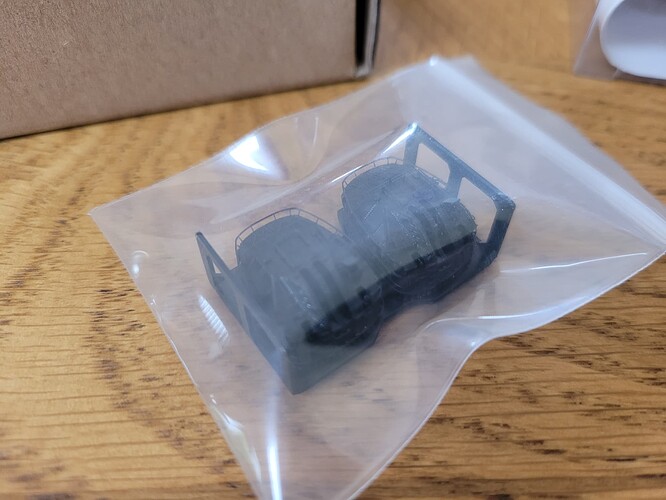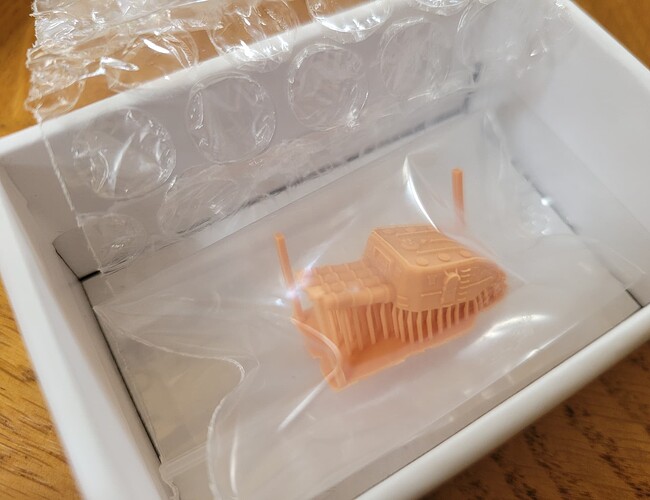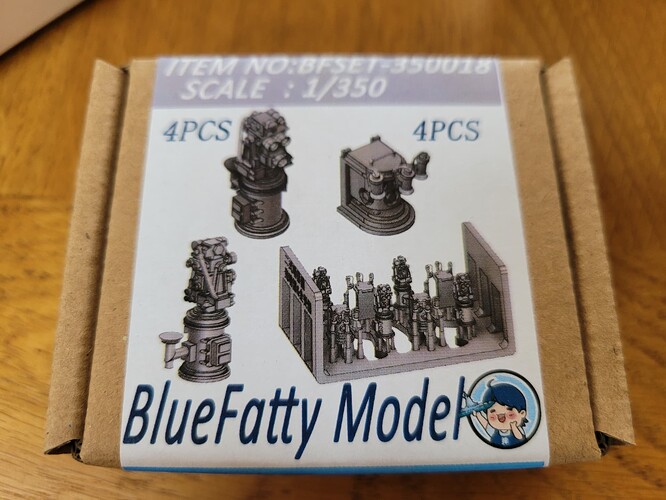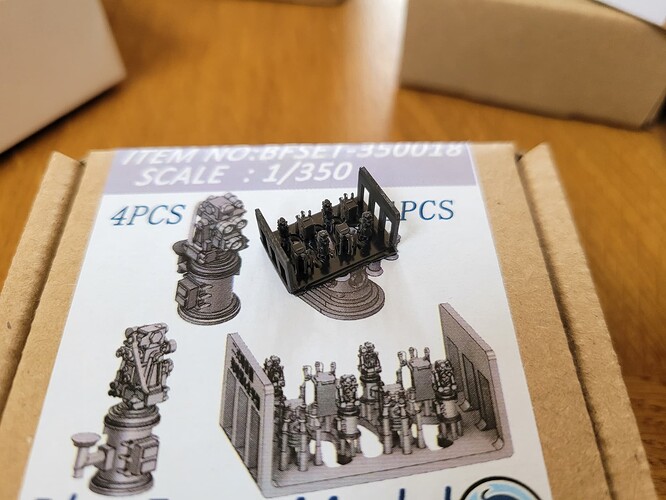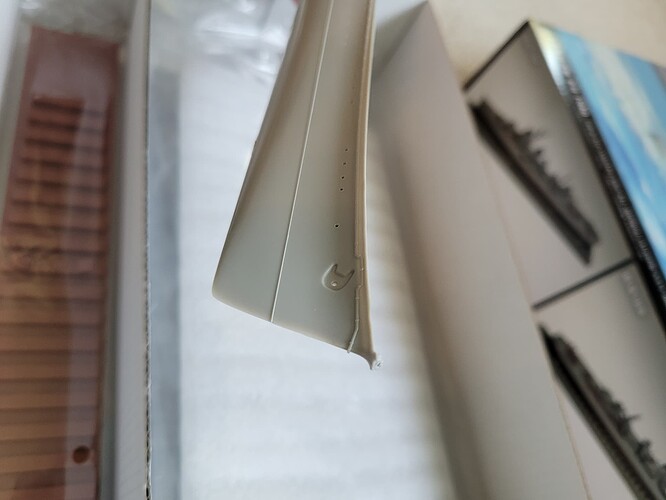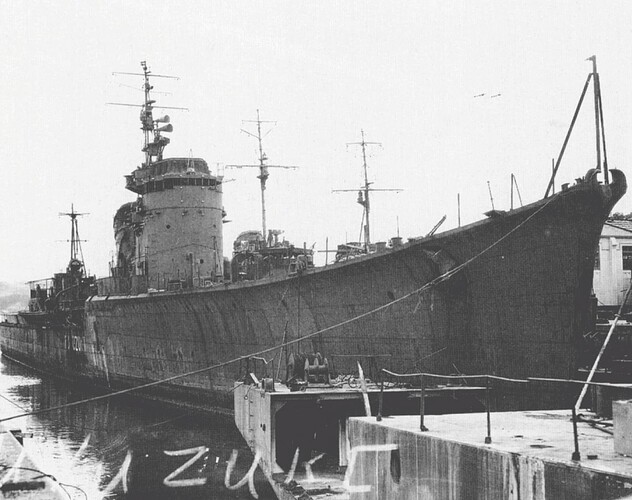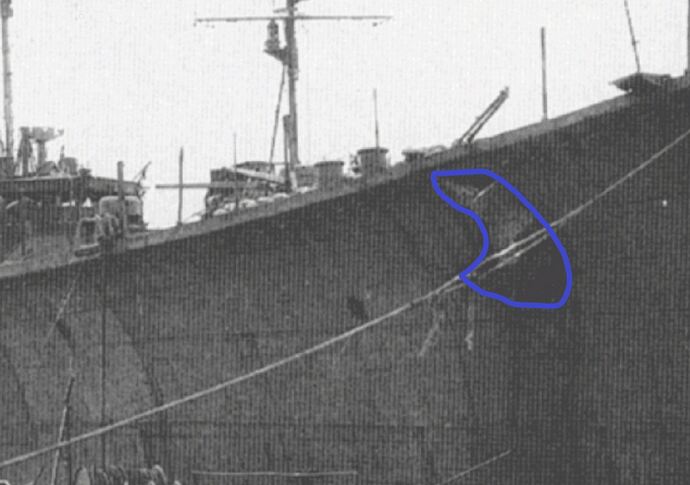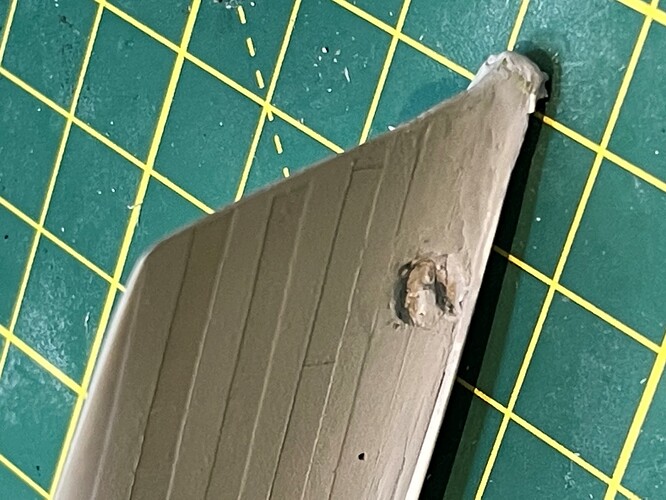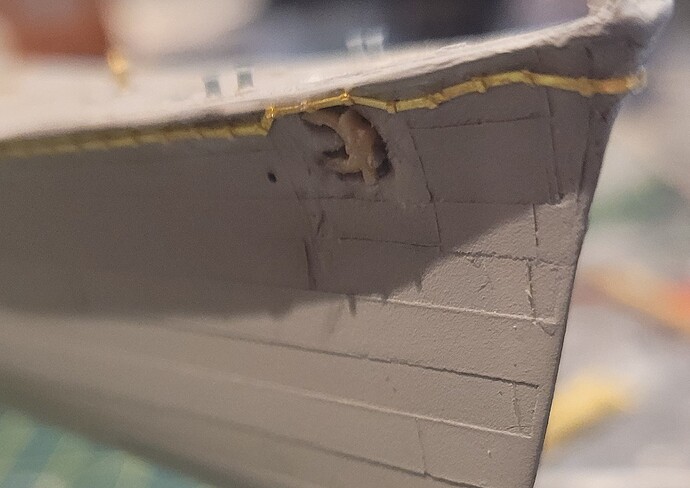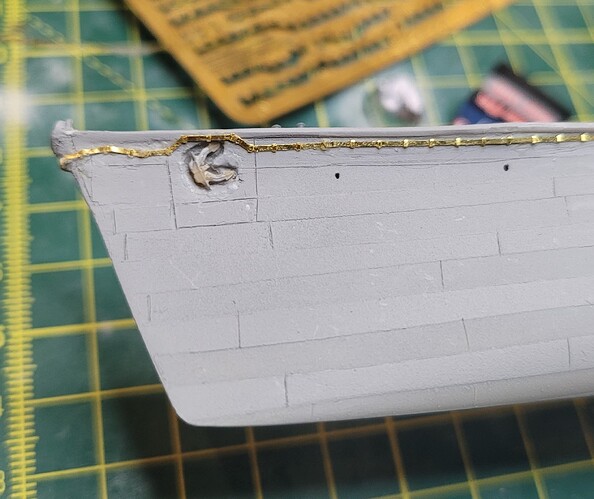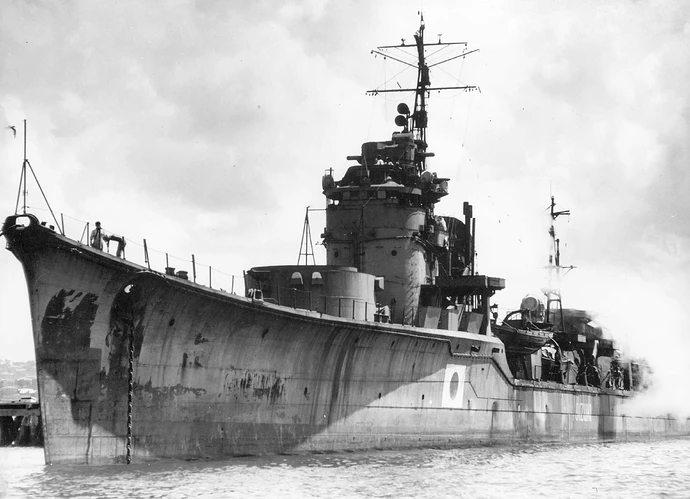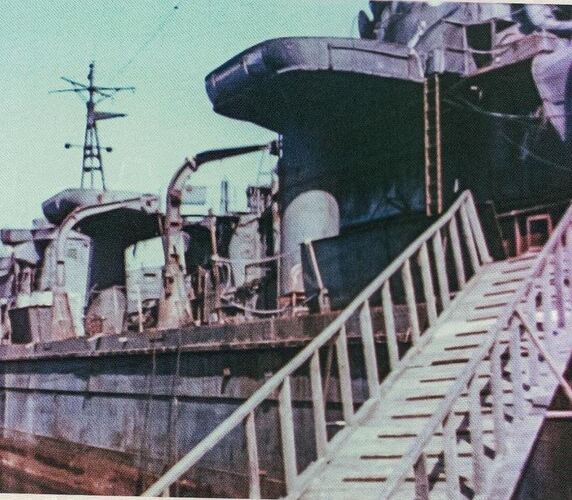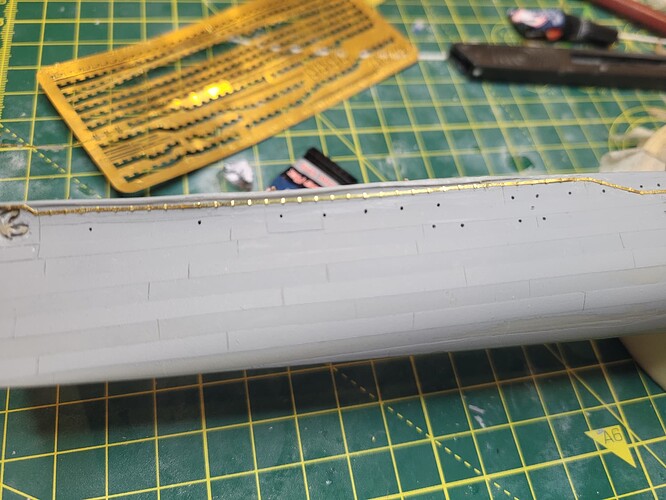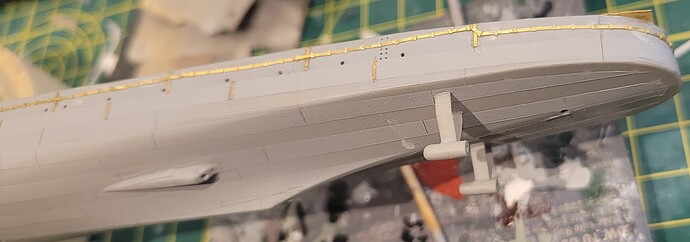Thanks for all the responses since my last post, I am going to try and post more regularly from now on.
Life continues to not allow me time to spend on the build, plus I have been trying to finish off a I-400 I have had in a nearly finished state for a long time now (still waiting on a Hobbyeasy order to add the finishing touches).
Anyway back to Fuyutsuki…
So after applying the brass decks to Fuyutsuki, I quickly realized Fivestar had not allowed the correct spacing around the edges of the decks, especially the forecast one.
As can be seen here there is a reasonable border around the linoleum and treaded deck sections where the railing stanchions sit.
As can be seen, the gap left is not consistent and very tiny.
Additionally, the Akizuki class vessels have flat side surfaces stretching across the border of the upper deck.
Wave instead decides to depict this as a fine point…

To fix both of these issues I sanded off all the deck left around the plate. Next, I ordered a 0.8 mm thick styrene sheet and cut thin strips to the estimated width of these side surfaces. I could then stick them across the edges of Fuyutsuki and blended the strips into the angled portion at the end of the deck. I also sanded a little to recreate the slight reduction in the width of these side walls as they approach the bow.
Another big and rather unexpected job was fixing the bow of the ship. The shape molded is slightly off, possibly as a result of Fuyutsuki’s bow reconstruction as it looks a little different to the other Fuyutsuki subclass vessel bows.
It can be seen here that Fuyutsuki’s bow is rather large and chunky, with a clear raised plate at the top. The kit on the otherhand has a protruded section and is too streamlined when it shoould be more rounded.
I couldn’t get a good focus on my camera but the molded-on chocks also look pretty terrible and inaccurate…
I removed the chocks, sanded down the protruded section slightly, then got to remodeling with some ‘greenstuff’ (basically firmer modeling putty).
I sealed the putty with progressive thick coats of Mr Surfacer 1200 and smoothed it down.
L’Arsenal provided the chocks, the open chocks looked similar to those on the Fuyutsuki.
As can be seen, the right chock is angled aft, so I cut off the two chock arms and glued them separately to account for this.
To represent the aforementioned plate, I masked off the shape of it on the bow, then sprayed a thick coat of Mr. Surfacer 500 just to this section.
Returning to the aft of the forecast deck, I had not accounted for a small portion of non-linoleum deck which was not angled.
The Profile Morskie illustration depicts this nicely (maybe has oversized it a little), but it is visible in a fair few pictures of Akizuki class vessels.
To replicate this, I cut strips of paper soaked in glue to the estimated width, and also cut another paper section to the shape of the angled section to layer it. I also cut a small section to add the corner at the rear of the deck. A coat of Mr. Surfacer 1200 later and I had a much better-looking angled deck section.
Anyway, some finished results pictures…
My camera continues to do a horrible job of focusing on anything small and making everything look a little messy. I’m planning to completely spray the hull with a coat of Mr. Surfacer 1200 then send when I have finished all the heavy hull remodeling to hopefully clean up some of the more messy sections, then the finer details can be applied.
